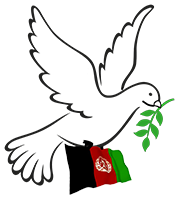This report aims to place the Emirate’s August 2024 Propagation of Virtue and Prevention of Vice Law within a broader Islamic context. John Butt argues that the two basic concepts – amr bil-maruf and nahi an il-munkar – are simple: encourage people to do good and discourage them from wrongdoing. To clarify these concepts, he says, one can make them even simpler: Stand up for good; Take a stand against wrong. Seen in this bare and basic light, amr bil-maruf, he believes, is an upstanding and admirable principle and practice of Islam.
Yet, from this, has emerged a colossal document. The Emirate’s law, in essence a decree by its Supreme Leader, Hibatullah Akhundzada, stands somewhere in the region of 45,000 words when translated into English. Its copious footnotes are used to back up the Emirate’s decisions on what to ban, what to make obligatory and how to determine the powers and responsibilities of those enforcing the law. The authority of the enforcer is wide-ranging and includes the ability to order extra-judicial punishments. Many of the sources cited in the footnotes are in Arabic, a language understood by relatively few Afghans, or non-Arab foreigners, which is one reason why we thought it important to translate the whole law to better understand the thinking behind it.
Butt looks at the meaning and practice of the Emirate’s amr bil-maruf law, first in the context of fundamental Islamic principles, including the obligation of Muslims to present a positive image of their faith to the outside world, and second, as amr bil-maruf has been interpreted at crucial stages of Islamic history. He focuses on the reigns of two caliphs cited in the footnotes of the IEA law, before considering a nineteenth-century Pashtun project to encourage amr bil-maruf. He also hones in on how it affects two groups that see the full weight of the Amir’s decree – women and, to a lesser extent, the media.
Butt’s report clarifies how the Emirate’s version of propagating virtue and preventing vice fits into the wider Islamic and Afghan historical context, asking questions such as: Have those who framed the law referenced a wide range of sources and done so objectively, or have they been selective? Is the establishment of a dedicated ministry, such as the one set up by the IEA, the normal way to conduct amr bil-maruf? And how does the law measure on the scales of the crucial Islamic balance that seeks to steer a course between harshness and leniency?
* John Butt is a graduate of the Darul Uloom Deoband in India. This is the key seminary informing the Islamic thought of most Afghan Sunni clerics, including the Taliban. Butt went on to have a career in journalism and broadcasting – including reporting for the BBC from Kandahar in the early 1990s on the men who would go on to form the Taliban movement – and setting up radio serial dramas. He published an autobiography, A Talib’s Tale: The Life and Times of a Pashtoon Englishman, in 2021 and a previous AAN report, A Taleban Theory of State: A review of the Chief Justice’s book of jurisprudence, was a review of Emirate Chief Justice Abdul Hakim Haqqani’s book, The Islamic Emirate and Its System of Governance, which is the fullest and most authoritative account yet of what the Taliban believe an Islamic state should be like.
Edited by Kate Clark and Roxanna Shapour
You can preview the report online and download it by clicking here or the download button below.
The full translation of the law can be read here.
 Afghanistan Peace Campaign
Afghanistan Peace Campaign